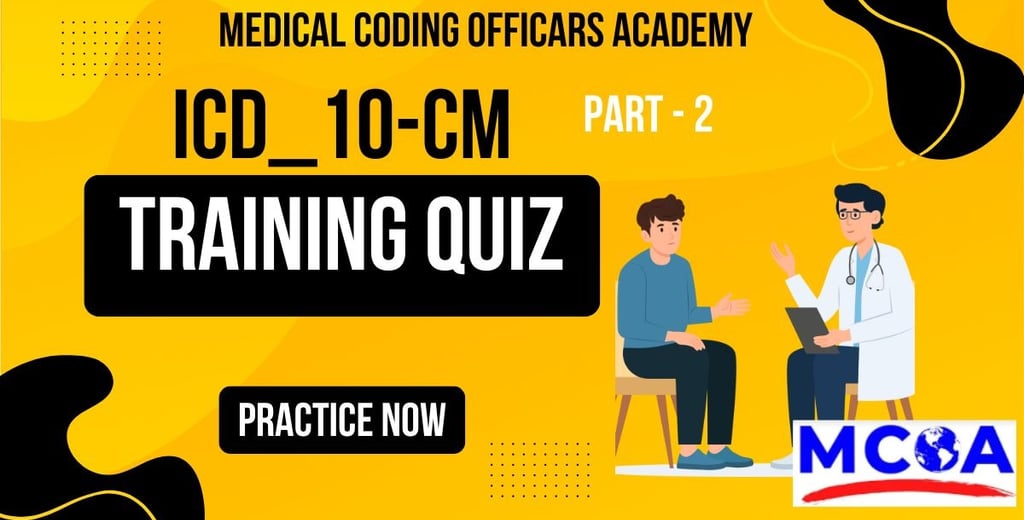ICD-10-CM Quiz – Part 2
Here’s another batch of 10 quiz questions to deepen your students’ understanding of ICD-10-CM, including case-based, application-style, and matching types for variety.
Medical Coding Officers Academy
6/28/20251 min read


11. In the code “S52.521A,” what does the letter “A” signify?
Final encounter
Sequela
Subsequent encounter
Initial encounter
12. True or False: The ICD-10-CM Tabular List is arranged by chapters based on body systems or conditions.
13. Which of the following codes would most likely represent a diagnosis of essential hypertension?
I10
R05
E66.9
J45.909
14. Identify the correct breakdown of this ICD-10-CM code: G44.1 – Vascular headache, not elsewhere classified.
G44: Condition; .1: Subtype
G: General category; 44.1: Site and cause
G44.1: Procedure
None of the above
15. A patient presents with Type 2 diabetes and diabetic nephropathy. Which code applies?
E11.9
E11.21
N18.9
R60.9
16. Match the code type with its function:
Placeholder ‘X’ — i) Separates codes for insurance purposes
7th character — ii) Indicates visit type (initial, subsequent)
Combination code — iii) Links multiple conditions in one code
(Choose the correct match: a–i, b–ii, c–iii)
17. True or False: Z codes are used only for infectious diseases.
18. What is the chapter range for mental and behavioral disorders in ICD-10-CM?
Chapter 1 (A00–B99)
Chapter 5 (F01–F99)
Chapter 7 (H00–H59)
Chapter 19 (S00–T88)
19. Which of the following represents a Z code used for health encounter reasons other than illness?
Z00.00 – Encounter for general adult medical examination
C34.9 – Malignant neoplasm of lung
E66.3 – Overweight
J11.1 – Influenza
20. When is it appropriate to use a sequela code in ICD-10-CM?
For acute conditions only
During ongoing treatment
To report late effects of a previous condition
Only for outpatient visits
Quick links
Contact Us
+91 - 80720 20716
medicalcodingofficers@gmail.com
All Rights Reserved. Website Design by Medical Coding Officers Academy
Medical Coding Officers Academy
India's top most training center for medical coding, billing and RCM in healthcare industry.
Subscribe to our newsletter
70/1, 2nd Floor, 200 Feet Radial Road, Pallavaram to Thuraipakkam Road, Near A2B Restaurant, Pallikaranai, Chennai, Tamil Nadu 600100

